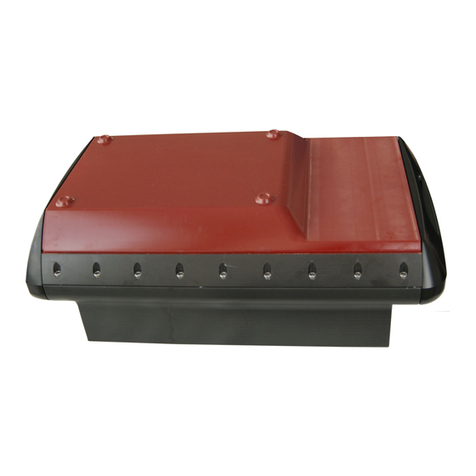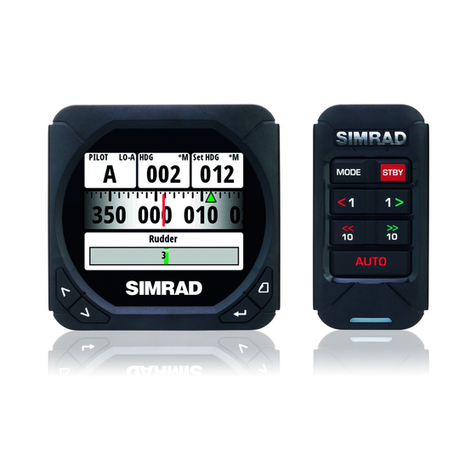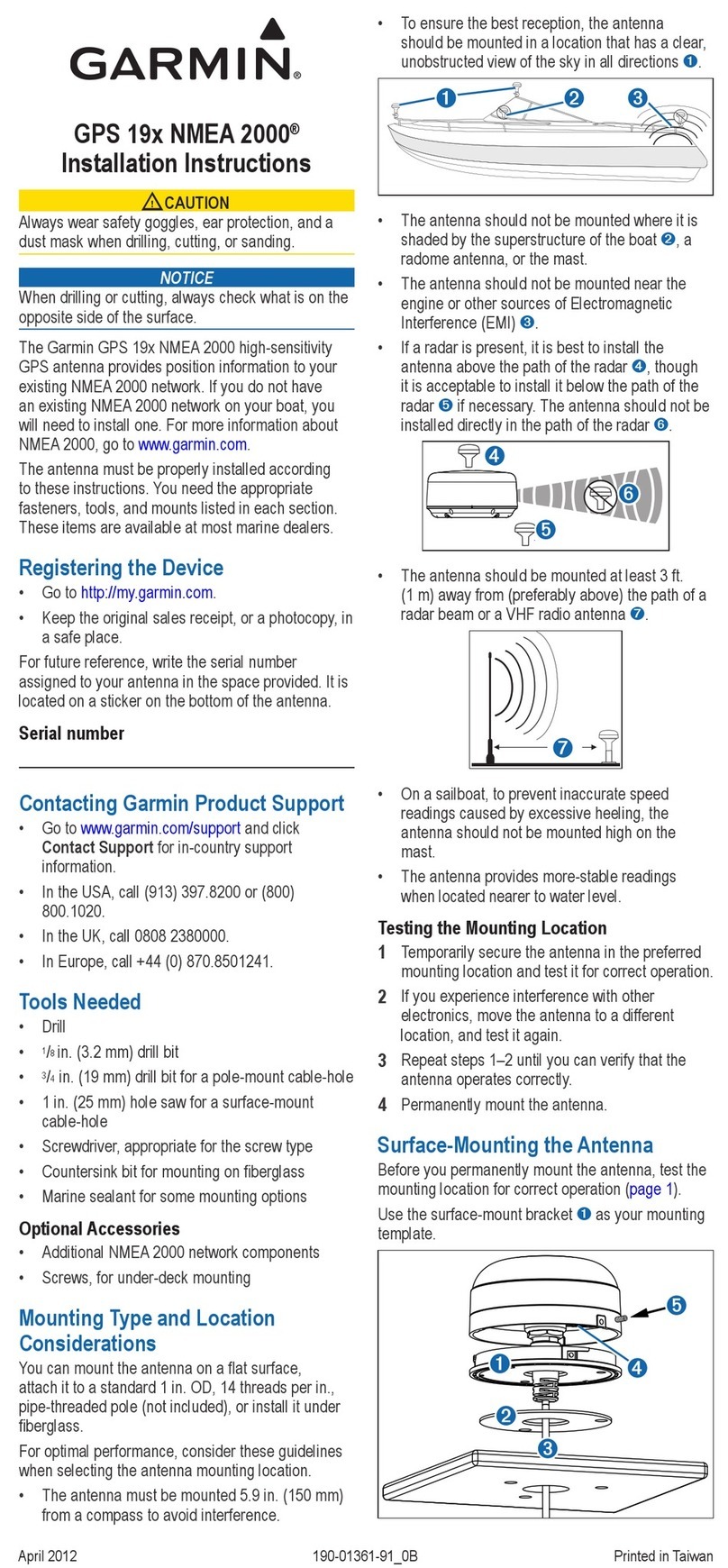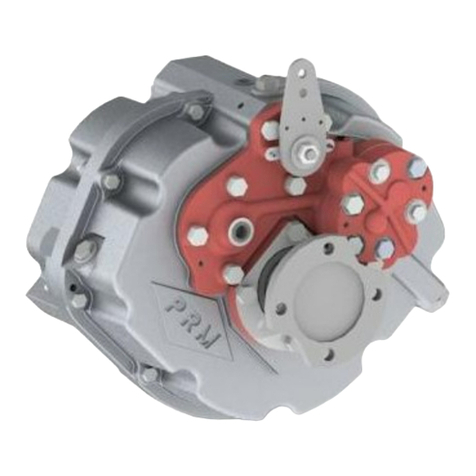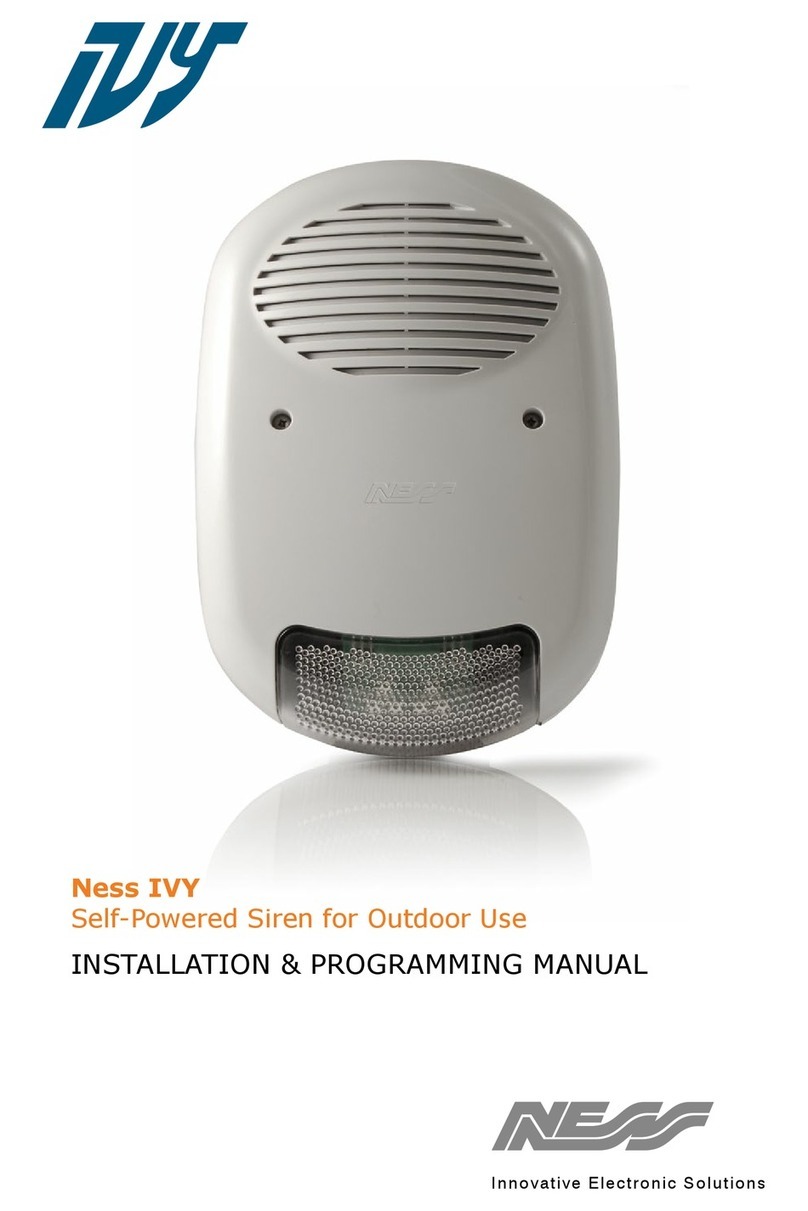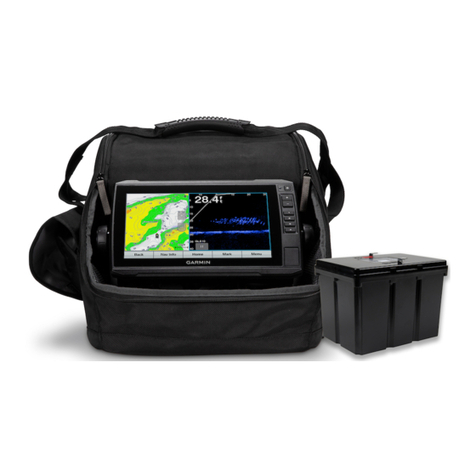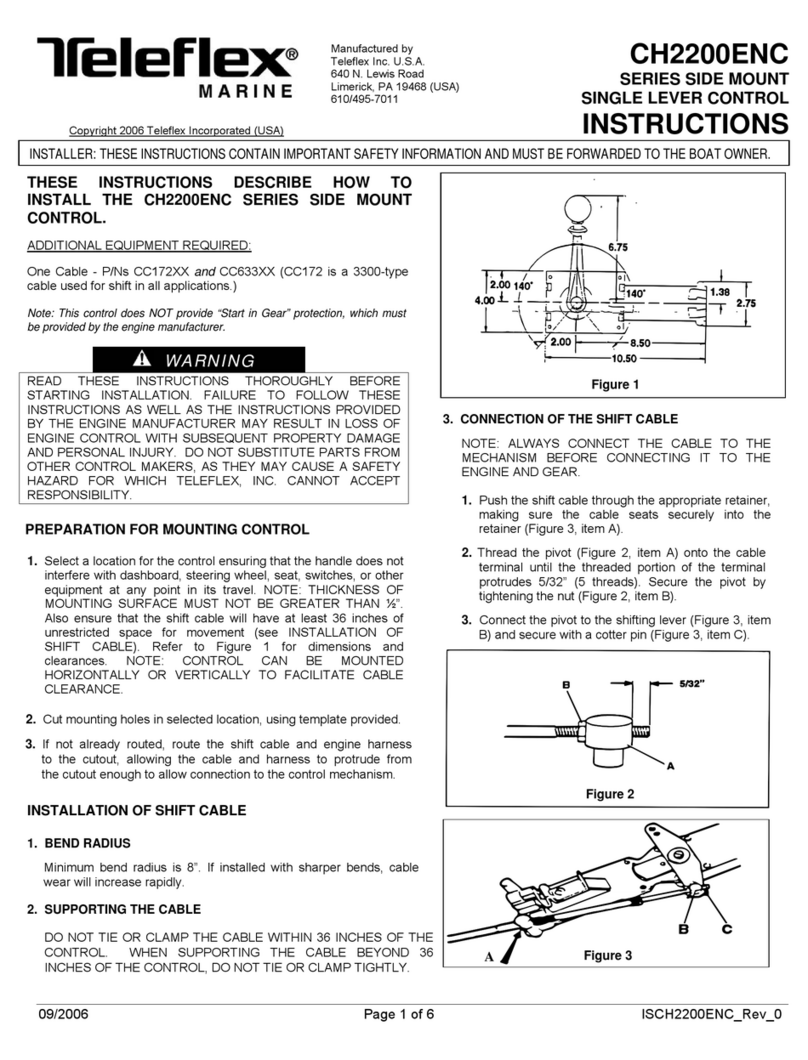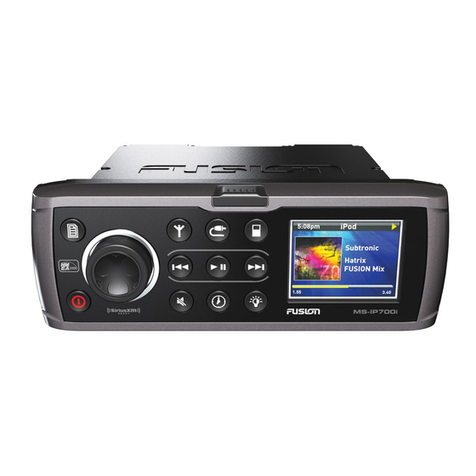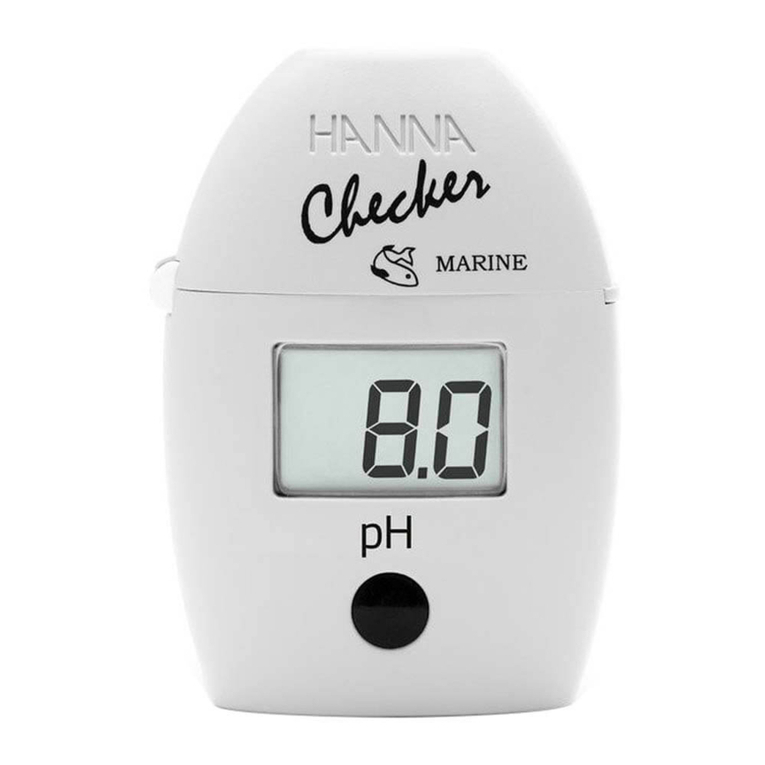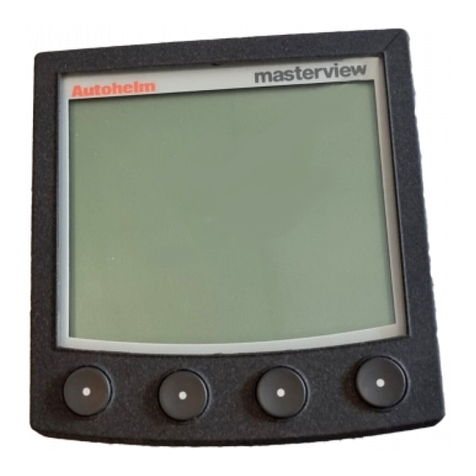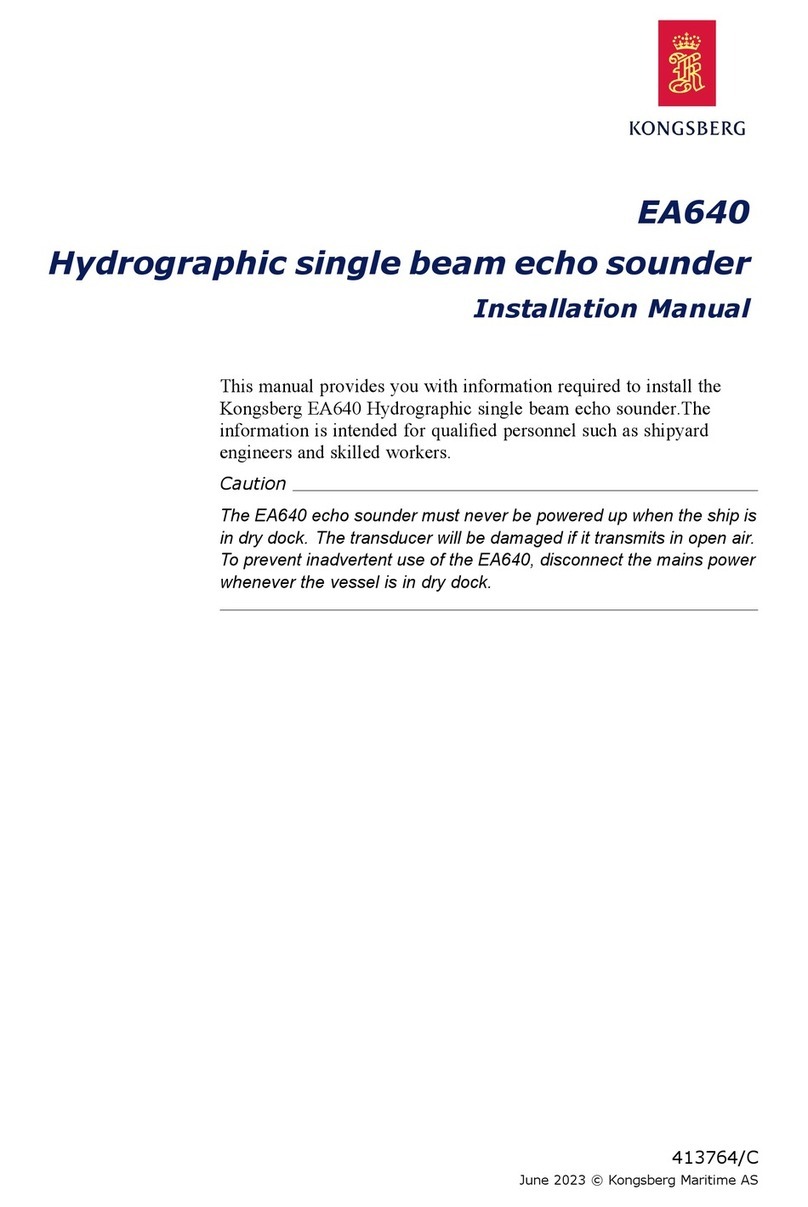Tokyo Keiki TG-8000 Series User manual

Document No.
E10-1103
Gyro-compass
TG-8000 Series
TG-8100 / 8600
Operator's Manual
2018.03
Marine Systems Company
TOKYO
KEIKI
INC.


(1)
SAFETY PRECAUTIONS
1. Safety-related designations used in this manual and products are as
follows.
Indicates an imminently hazardous situation which, if not
avoided, will result in death or serious injury.
Indicates an potentially hazardous situation which, if not
avoided, could result in death or serious injury.
Indicates an potentially hazardous situation which, if not
avoided, may result in minor or moderate injury or property
damage accident.
WARNINGR
DANGER
CAUTION
w
w
w

(2)
2. The following warning label is attached to this system.
(1) WARNING
3. Attached position of warning label in this system is as follows.
[ (1) WARNING ] Warning label
* For the system that this system is built in the automatic steering system, the warning
label is attached on the automatic steering system side. Refer to the label attached
position mentioned in the Operator's Manual for the automatic steering system.
TG-8100-S / TG-8600-S
Control unit
TG-8100-D / TG-8600-D
Control unit
「(1) Alert」Alert label
「(1) Alert」Alert label
Power supply unit
「(1)Alert」Alert label
TG-8100-I / TG-8600-I
Control unit
「(1)Alert」Alert label
&WARNING
Main powercan cause electric
shock.
Do not touch terminal boards,
etc., even
if
unit power OFF.
0
0
11111111
•
ge
!I
a o
@J
o
CJ
0
0
•
Uo
IIOIIIIOIIIO

(3)
4. Safety-related precautions, etc., mentioned in this manual are
summarized as follows (related page to each item is in parentheses).
(1) Warning regarding general caution for use of this system (See page 1-1.)
WARNING
●Improper operations caused by failure of this system or malfunctions caused by
operator's misunderstanding may cause distress such as collision and grounding, and
may result in property damages and environmental pollution. Further, death or serious
injury may happen.
●Full attention should be paid on use of this system by understanding limitations in
performance or characteristics of this system and by familiarizing with operation
methods.
(2) Warning regarding operation (See page 3-1.)
WARNING
●There are matters to be attended in starting of this system and operations during
running. These matters are described in each related item in this chapter with
CAUTION or WARNING, etc., which should always be observed.
●Read the Operator's Manual of the automatic steering system carefully preparing for
occurrence of trouble or alert in this system, and the emergency steering method should
be well understood to treat such matters smoothly.
(3) Warning regarding maintenance and check (See page 5-1.)
WARNING
●In the stage of maintenance and check of the system, touching internal parts may cause
electric shock because the ship's power supply is still applied to the system distribution
board even if the main power switch of this system is turned "OFF". Do not touch
internal parts such as internal terminal boards and power supply unit, etc. If
necessary, disconnect the power cable from the ship’s distribution board.
The following warning label is attached to the dangerous position of this system
I/
~WARNING
Main power can cause electric
shock.
Do not touch terminal boards,
,etc., even if unit power OFF.
~

(4)
(4) Warning regarding general caution for use of this system (See page 1-1.)
CAUTION
●This system displays gyrocompass heading and outputs the heading information to the
outside.
Although the safety design such as the alert function against failure, etc., is provided,
there is no perfect safety design at the present time.
In addition, as this system has many important functions, it is hard to say that any one
can use this system without failure.
Failures or malfunctions of this system may cause distress, and full attention should be
paid on use of this system.
User's responsibility and obligation in insuring safe navigation and the proper exercise
of navigational techniques is in no way reduced by the use of this equipment.
The following cautions should be observed.
1. Always perform daily check to maintain normal system condition.
2. When anomalies are detected in the result of daily check, investigate and repair at
once to recover to normal conditions and request advice of our service engineer.
3. When the alert system operates during use, always check to confirm the cause
and recover the troubled point.
(5) Warning regarding kinds of function (See page 1-2.)
CAUTION
●When an alert related to GNSS (alert code "c" or "d") is generated and the gyrocompass
true heading has not been determined, once turn the steering mode to "MANUAL" or
"Non Follow Up", then determine the true heading because erroneous heading
information (repeater signal and serial signal) is possible to be outputted to the outside.
Refer to “3.4.5 (2) Countermeasures when GPS communication abnormality is
generated" in Chapter 3 Operation, for determination method of the true heading.
●When an alert regarding to LOG (serial) (alert code "P" or "U") is generated and the true
heading of the gyrocompass has not been determined, once turn the steering mode to
"MANUAL" or "Non Follow Up", then determined the true heading because the
erroneous heading information (repeater signal and serial signal) is possible to be
outputted to the outside. Refer to “3.4.5 (4) Countermeasures when LOG (serial)
communication abnormality is generated" in Chapter 3 Operating Method, for
determination method of the true heading.
●When an alert regarding to the log contact (alert code "u") is generated and the true
heading of the gyrocompass has not been determined, once turn the steering mode to
"MANUAL" or "Non Follow Up", then determine the true heading because erroneous
heading information (repeater signal and serial signal) is possible to be outputted to the
outside. Refer to “3.4.5 (5) Countermeasures when LOG contact abnormality is
generated" in Chapter 3 Operating Method, for determination method of the true
heading.
●When an alert regarding to the external heading sensor (alert code "E", "F", "L" and "N")
is generated, the heading information immediately before the alert generated is
outputted. Once turn the steering mode to "MANUAL" or "Non Follow Up", and then
determine the true heading. Refer to “3.4.5 (3) Countermeasures when external
heading sensor related communication abnormality is generated" in Chapter 3
Operating Method, for determination method of the true heading.
After the true heading is determined, this system's heading is outputted to the outside.
●When the system is switched, perform it after once turned the automatic steering
system to "MANUAL" or "Non Follow Up" to prevent course turning with larger angle.

(5)
(6) Warning regarding configuration (See page 2-1.)
CAUTION
●When this system is assembled in the automatic steering system stand (autopilot
built-in), the master compass and each unit of the control unit are assembled in the
steering stand and the sensitive element is separately packed.
(7) Warning regarding start (See page 3-9.)
CAUTION
●Start this system after turned the automatic steering system to other mode than "AUTO".
(8) Warning regarding setting of latitude input system (See page 3-11.)
CAUTION
●Change of the latitude input system or a large change of latitude value may cause a
large change of the true heading.
During the automatic steering, once turn the steering mode of the automatic steering
system to "MANUAL" to prevent a large course changing, and after confirming
surrounding safety of own ship, turn to "AUTO" steering again.
(9) Warning regarding setting of latitude input system (See page 3-11.)
CAUTION
●When an alert related to GNSS (alert code "c" or "d") is generated and the true heading
of the gyrocompass has not been determined, once turn the steering mode to
"MANUAL" or "Non Follow Up", then determine the true heading because erroneous
heading information (repeater signal and serial signal) is possible to be outputted to the
outside.
Refer to “3.4.5 (2) Countermeasures when GNSS communication abnormality is
generated" in Chapter 3 Operating Method, for determination method of the true
heading.
(10) Warning regarding setting of latitude input system (See page 3-11.)
CAUTION
●When "GYRO" is selected for the latitude input system, latitude is automatically updated
by the ship's speed and the gyrocompass true heading. (When the ship's speed input
system is "MANUAL", it is not updated automatically.) During navigation, confirm once
in 2 hours that the ship's actual latitude coincides with the indicated latitude.

(6)
(11) Warning regarding setting of latitude input system (See page 3-11.)
CAUTION
●Whenever to complete the setting, push ACK / ENT switch④. Changed setting is
not updated unless pushing ACK / ENT switch④.
(12) Warning regarding setting of ship's speed input system (See page 3-13.)
CAUTION
●Change of the ship's input system or large change of ship's speed may cause large
change of the true heading.
During the automatic steering, once turn the steering mode of the automatic steering
system to "MANUAL" to prevent a large course changing, and after confirming
surrounding safety of own ship, turn to "AUTO" steering again.
(13) Warning regarding setting of ship's speed input system (See page 3-13.)
CAUTION
●When an alert related to GNSS (alert code "c" or "d") is generated and the true heading
of the gyrocompass has not been determined, once turn the steering mode to
"MANUAL" or "Non Follow Up", then determine the true heading because erroneous
heading information (repeater signal and serial signal) is possible to be outputted to the
outside.
Refer to “3.4.5 (2) Countermeasures when GNSS communication abnormality is
generated" in Chapter 3 Operating Method, for determination method of the true
heading.
(14) Warning regarding setting of ship's speed input system (See page 3-13.)
CAUTION
●When alert regarding to LOG (serial signal) (alert code "P" or "U") is generated and the
true heading of the gyrocompass has not been determined, once turn the steering mode
to "MANUAL" or "Non Follow Up", then determined the true heading because the
erroneous heading information (repeater signal and serial signal) is possible to be
outputted to the outside.
Refer to “3.4.5 (4) Countermeasures when LOG (serial) communication abnormality is
generated" in Chapter 3 Operating Method, for determination method of the true
heading.

(7)
(15) Warning regarding setting of ship's speed input system (See page 3-13.)
CAUTION
●When alert regarding to LOG (contact) (alert code "u") is generated and the true heading
of the gyrocompass has not been determined, once turn the steering mode to
"MANUAL" or "Non Follow Up", then determined the true heading because the
erroneous heading information (repeater signal and serial signal) is possible to be
outputted to the outside.
Refer to “3.4.5 (5) Countermeasures when LOG (contact) communication abnormality is
generated" in Chapter 3 Operating Method, for determination method of the true
heading.
(16) Warning regarding setting of ship's speed input system (See page 3-13.)
CAUTION
●The setting of the ship's speed input system (and its values for "MANUAL") is stored,
and when re-started, the previous ship's speed system setting is restored and starts.
When "MANUAL" is selected, stop after ship's speed setting is set to zero knot.
Also, when turned off and on again with "GNSS" selected, confirm that GNSS is
operating properly.
(17) Warning regarding setting of ship's speed input system (See page 3-14.)
CAUTION
●Whenever to complete the setting, push ACK/ENT switch④. Changed setting is
not updated unless pushing ACK/ENT switch④.
(18) Warning regarding setting of the “rate of turn filter constant” (See page 3-15.)
CAUTION
●Whenever to complete the setting, push ACK / ENT switch④. Changed setting is
not updated unless pushing ACK / ENT switch④.
(19) Warning regarding confirmation of the true heading (See page 3-15.)
CAUTION
●When the gyrocompass true heading is set again, the repeater indication value and the
serial signal gyrocompass true heading will change by the changed angle.
During the automatic steering, once turn the steering mode of the automatic steering
system to "MANUAL" to prevent a large course changing, and after confirming
surrounding safety of own ship, turn to "AUTO" steering again.

(8)
(20) Warning regarding confirmation of the true heading (See page 3-15.)
CAUTION
●Whenever to complete the setting, push ACK / ENT switch④. Changed setting is
not updated unless pushing ACK / ENT switch④.
(21) Warning regarding system selection (See page 3-16.)
CAUTION
●System selection (switching) may cause large change of the true heading. During the
automatic steering, once turn the steering mode of the automatic steering system to
"MANUAL" to prevent a large course changing, and after confirming surrounding safety
of own ship, turn to "AUTO" steering again.
(22) Warning regarding monitoring in running (See page 3-17.)
CAUTION
●Change of the ship's speed input system and the latitude input system, or large change
of the ship's speed and the latitude, may cause large change of the gyrocompass true
heading.
During the automatic steering, once turn the steering mode of the automatic steering
system to "MANUAL" to prevent a large course changing, and after confirming
surrounding safety of own ship, turn to "AUTO" steering again.
(23) Warning regarding confirmation of the latitude (See page 3-18.)
CAUTION
●Change of the latitude input system or large change of the latitude may cause large
change of the true heading. During the automatic steering, once turn the steering
mode of the automatic steering system to "MANUAL" to prevent a large course
changing, and after confirming surrounding safety of own ship, turn to "AUTO" steering
again.
(24) Warning regarding confirmation of the ship's speed (See page 3-18.)
CAUTION
●Change of the ship's speed input system or large change of the ship's speed may cause
large change of the true heading. During the automatic steering, once turn the
steering mode of the automatic steering system to "MANUAL" to prevent a large course
changing, and after confirming surrounding safety of own ship, turn to "AUTO" steering
again.

(9)
(25) Warning regarding system selection (See page 3-19.)
CAUTION
●System selection (switching) may cause large change of the true heading. During the
automatic steering, once turn the steering mode of the automatic steering system to
"MANUAL" to prevent a large course changing, and after confirming surrounding safety
of own ship, turn to "AUTO" steering again.
(26) Warning regarding Operation procedure of master compass power switch (Option)
(See page 3-19.)
CAUTION
●DO NOT touch the master compass power switch while the gyrocompass runs
normally to prevent the sensitive element from serious damage which may cause
reducing the life time or unexpected trouble.
The master compass power switch must be operated only when the master compass is
in abnormal condition.
(27) Warning regarding alert (See page 3-20.)
CAUTION
●When the following alerts are generated, the heading information from this system may
not be outputted at all or may have large error.
All units operated by the heading information from this system (in particular, the
automatic steering system, etc.) should be immediately operated according to the
individual emergency operating procedure.
(28) Warning regarding countermeasures when GNSS communication abnormality is generated
(See page 3-24.)
CAUTION
●When an alert related to GNSS (alert code "c" or "d") is generated and the true heading
of the gyrocompass has not been determined, once turn the steering mode to
"MANUAL" or "Non Follow Up", then determine the true heading because erroneous
heading information (repeater signal and serial signal) is possible to be outputted to the
outside. Refer to “3.4.5 (2) Countermeasures when GNSS communication abnormality
is generated" in Chapter 3 Operating Method, for determination method of the true
heading.
(29) Warning regarding countermeasures when GNSS communication abnormality is generated
(See page 3-24.)
CAUTION
●Determination of the true heading may cause large change of the outputted heading
information. During the automatic navigation, great care should be taken because
large course change may be happened.

(10)
(30) Warning regarding countermeasures when external heading sensor related communication
abnormality is generated (See page 3-24.)
CAUTION
●When an alert related to the external heading sensor (alert code "E", "F", "L" and "n") is
generated, the heading information (repeater signal and serial signal) immediately
before the alert was generated is outputted to the outside.
Once turn the steering mode to "MANUAL" or "Non Follow Up", and then determine the
true heading.
After the true heading is determined, the heading of this system is outputted to the
outside.
(31) Warning regarding countermeasures when external heading sensor related communication
abnormality is generated (See page 3-24.)
CAUTION
●Determination of the true heading may cause large change of the outputted heading
information. During the automatic navigation, great care should be taken because
large course change may be happened.
(32) Warning regarding countermeasures when LOG (serial signal) communication abnormality
is generated (See page 3-25.)
CAUTION
●When an alert related to LOG (serial signal) (alert code "P" or "U") is generated and the
true heading of the gyrocompass has not been determined, once turn the steering mode
to "MANUAL" or "Non Follow Up", then determine the true heading because erroneous
heading information (repeater signal and serial signal) is possible to be outputted to the
outside.
Refer to “3.4.5 (4) Countermeasures when LOG (serial signal) communication
abnormality is generated" in Chapter 3 Operating Method, for determination method of
the true heading.
(33) Warning regarding Countermeasures when LOG (serial signal) communication abnormality
is generated (See page 3-25.)
CAUTION
●Determination of the true heading may cause large change of the outputted heading
information. During the automatic navigation, great care should be taken because
large course change may be happened.

(11)
(34) Warning regarding countermeasures when LOG (contact) abnormality is generated
(See page 3-26.)
CAUTION
●When an alert related to LOG (contact) (alert code "u") is generated and the true
heading of the gyrocompass has not been determined, once turn the steering mode to
"MANUAL" or "Non Follow Up", then determine the true heading because erroneous
heading information (repeater signal and serial signal) is possible to be outputted to the
outside.
Refer to “3.4.5 (5) Countermeasures when LOG (contact) abnormality is generated" in
Chapter 3 Operating Method, for determination method of the true heading.
(35) Warning regarding troubleshooting (See page 4-1.)
CAUTION
●When an alert is generated, immediately confirm content of the generated alert and take
suitable measures according to "4.3 Countermeasures" in this chapter.
●When failure has generated, confirm surrounding safety and perform checking and
required measures at non-dangerous sea area, stopping the ship as a rule.
(36) Warning regarding countermeasures (See page 4-2.)
CAUTION
●Before checking and replacement of fuses, and disconnecting / connecting of each unit,
connector, printed circuit, terminal cable, turn "OFF" the power switch of the operating
panel, and further disconnect the power cable from the ship’s distribution board, etc. It
may cause electric shock and failure if left "ON" position.
(37) Warning regarding failure phenomena and countermeasures (See page 4-2.)
CAUTION
●Whenever the internal setting of the system is changed, follow our service engineer's
instruction.
●When other malfunction than appeared in this clause is generated or the replaced fuse
has blown again, turn "OFF" the power switch of the operating panel, disconnect the
power cable from the ship’s distribution board and request our service engineer's repair.
●When a failure is has occurred and it has not been repaired according to this clause,
turn "OFF" the power switch of the operating panel and request our service engineer's
repair on making a call to the port. Also even when it was repaired according to "4.3.2
Failure and countermeasures" in this chapter, request our service engineer's checking
in a like manner on making a call to the port.

(12)
(38) Warning regarding power supply abnormality (alert code "1") (See page 4-3.)
CAUTION
●Fully pay attention to electric shock when checking the power supply.
●When checking fuses, turn "OFF" the power switch on the operating panel and further
disconnect the power cable from the ship’s distribution board before checking fuses.
(39) Warning regarding Inverter abnormality (alert code "3") (See page 4-7.)
CAUTION
●When checking fuses, turn "OFF" the power switch on the operating panel and further
disconnect the power cable from the ship’s distribution board when checking fuses.
(40) Warning regarding rotor level abnormality (alert code "6") (See page 4-7.)
CAUTION
●When an alert code "6" is generated, the gyrocompass true heading may have error.
Turn the steering mode to "MANUAL" then determine the true heading to prevent course
turning with larger angle.
(41) Warning regarding zero cross abnormality (alert code "8") (See page 4-7.)
CAUTION
●Determination of the gyrocompass true heading during alert code "8" is generated may
cause a large change of the true heading. During automatic navigation, great care
should be taken because large course change may be happened
(42) Warning regarding master compass heading abnormality (alert code "G")
(See page 4-11.)
CAUTION
●When an alert code "G" is generated, the gyrocompass true heading may have error.
And new input of the true heading may cause a large change of the true heading.
During automatic navigation, once turn the steering mode to "MANUAL" then determine
the true heading to prevent course turning with larger angle, and after confirming
surrounding safety of own ship, turn to "AUTO" steering again.

(13)
(43) Warning regarding the gyrocompass does not operate, if turned "ON" the power switch on
the operating panel turned “ON”. (See page 4-12.)
CAUTION
●Fully pay attention to electric shock when checking the main power supply.
●When checking fuses, turn "OFF" the power switch on the operating panel and further
disconnect the power cable from the ship’s distribution board before checking fuses.
(44) Warning regarding each repeater does not operate. (See page 4-13.)
CAUTION
●When checking fuses, turn "OFF" the power switch, and further disconnect the power
cable from the ship’s distribution terminal board.
(45) Warning regarding all repeaters does not operate. (See page 4-13.)
CAUTION
●When checking fuses, turn "OFF" the power switch, and further disconnect the power
cable from the ship’s distribution board.
(46) Warning regarding maintenance and check (See 5-1.)
CAUTION
●Main units of this system consist of electronic circuits having high reliability. However, it
is impossible to say that no failure should happen.
Accordingly, the check and maintenance described in this chapter should be sincerely
carried out to remove failure risk as much as possible and to maintain the system
performance. Otherwise, detection of the failure sign will be delayed and may cause
distress such as collision or grounding.
●Request our service engineer when trouble is detected and cannot be repaired on
board.

(14)
PREFACE
1. This manual provides safety-related precautions and outline of this system,
and includes detailed information on specifications, construction,
operation, troubleshooting and countermeasures, etc.
(1) Please use this system correctly with a full understanding.
(2) The readers (operators) of this manual are assumed to be qualified persons according
to Japanese governmental law for ship's officers (ships under Japanese flag) or the
corresponding laws.
(3) Only qualified persons described in the above (2) or persons under the supervision of
the qualified person can handle this system. Do not have other persons handle this
system.
2. Items to be observed with respect to the manual
Items to be observed with respect to the manual are as follows.
(1) Please read this manual carefully.
Important items are described in this manual and it should thoroughly be read.
(2) Maintain this manual with care.
This manual is very important for handling this equipment. Keep it at hand for
reference whenever needed. Assign a person in charge of maintaining this manual
and fixed location for storage.
Relevant drawing for the finished plan of this system should be maintained together.
(3) This manual should be provided to the personnel actually handling the equipment.
Distributors, etc. should insure that these people receive this manual.
(4) Replace manual at once if lost.
If the manual is lost, request TOKYO KEIKI or our sales agency. A replacement
manual can be supplies at charge.
3. When the warning labels become dirty or detached, request TOKYO KEIKI.
Replacement labels can be supplied at charge.

(15)
4. Prohibitions and notations for protection of the system (prevention from
damage of the product itself and maintenance of quality).
The following items should be observed for protection of this system. For details, see
corresponding pages of this manual.
Prohibitions - - - Items to be prohibited
(1) Prohibition regarding insulation test (See page 5-1.)
PROHIBITION
Do not use insulation tester or other device to test system insulation as it will damage
internal electrical components.
Always disconnect the wirings connected to this system before testing related power
distribution lines with such testers.
Notations - - - Items to be noted
(1) Notation regarding to storage (See page 5-7.)
NOTE
Observe the following items for storage.
(1) Turn all power switches of this system to OFF position to disconnect the power.
(2) Storage temperature should be between –20℃to +55℃.
Avoid the place with high humidity as much as possible.
High humidity may cause rust.
(3) Prevent the storage place from generation of corrosive gas, breeding of bacteria
such as mold or intrusion of insects and small animals.
(4) Cover the system with a plastic sheet, etc., when generation of dust is foreseen.
When welding works, etc., are carried out near this system, be sure to mount a
suitable protection cover on the system to prevent damage caused by spark, etc.

(16)
CONTENTS
SAFETY PRECAUTIONS.........................................................................................(1)
PREFACE............................................................................................................... (14)
CONTENTS............................................................................................................ (16)
CHAPTER 1 GENERAL DESCRIPTIONS.............................................................1-1
1.1 General..............................................................................................................................1-1
1.2 Display and alert ...............................................................................................................1-2
1.3 Kinds of function................................................................................................................1-2
1.3.1 Step signal type repeater signal output function........................................................1-3
1.3.2 Serial signal type repeater signal output function......................................................1-3
1.3.3 Automatic steering function by this system................................................................1-3
1.3.4 Rate of turn signal output function.............................................................................1-3
1.3.5 Automatic speed error correction function.................................................................1-4
1.3.6 Timer start...................................................................................................................1-4
1.3.7 Function by the external heading sensor...................................................................1-4
1.3.8 Master compass running stop function (Optional).....................................................1-4
1.4 Warranty conditions ..........................................................................................................1-5
CHAPTER 2 SPECIFICATION AND CONSTRUCTION.........................................2-1
2.1 General..............................................................................................................................2-1
2.2 Configuration.....................................................................................................................2-1
2.3 Specifications....................................................................................................................2-1
2.4 Names and functions of each portion...............................................................................2-2
2.5 Mounting position of each unit..........................................................................................2-3
2.6 Alert list..............................................................................................................................2-4
CHAPTER 3 OPERATING METHOD.....................................................................3-1
3.1 General..............................................................................................................................3-1
3.2 Operating panel.................................................................................................................3-1
3.2.1 Explanation of the operating panel.............................................................................3-1
3.2.2 Indication....................................................................................................................3-3
3.3 Start and stop sequence...................................................................................................3-7
3.4 Start and running...............................................................................................................3-9
3.4.1 Start ............................................................................................................................3-9
3.4.2 System selection......................................................................................................3-16
3.4.3 Monitoring in running................................................................................................3-17
3.4.4 Operation procedure of master compass power switch .........................................3-19
3.4.5 Alert ..........................................................................................................................3-20
3.5 Stop.................................................................................................................................3-26

(17)
CHAPTER 4 TROUBLESHOOTING......................................................................4-1
4.1 General..............................................................................................................................4-1
4.2 Before troubleshooting......................................................................................................4-1
4.3 Countermeasures..............................................................................................................4-2
4.3.1 Measures when an alert is generated........................................................................4-2
4.3.2 Failure phenomena and countermeasures................................................................4-2
4.3.3 Replacement of fuse ................................................................................................4-14
4.4 Informed Items to TOKYO KEIKI service station............................................................4-16
CHAPTER 5 MAINTENANCE AND CHECK..........................................................5-1
5.1 General..............................................................................................................................5-2
5.2 Periodical check................................................................................................................5-2
5.3 Warning label check..........................................................................................................5-5
5.4 Spare parts........................................................................................................................5-5
5.5 Storage method.................................................................................................................5-6
5.6 Disposal method ...............................................................................................................5-6
CHAPTER 6 GLOSSARY......................................................................................6-1
CHAPTER 7 ATTACHED DRAWINGS...................................................................7-1

(18)
(blank)
This manual suits for next models
8
Table of contents
Popular Marine Equipment manuals by other brands
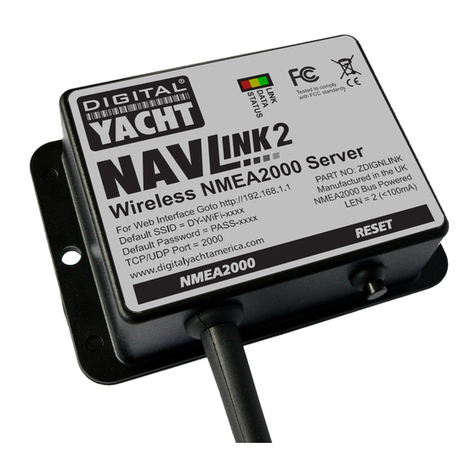
DIGITAL YACHT
DIGITAL YACHT NAVLINK2 Installation and instruction manual
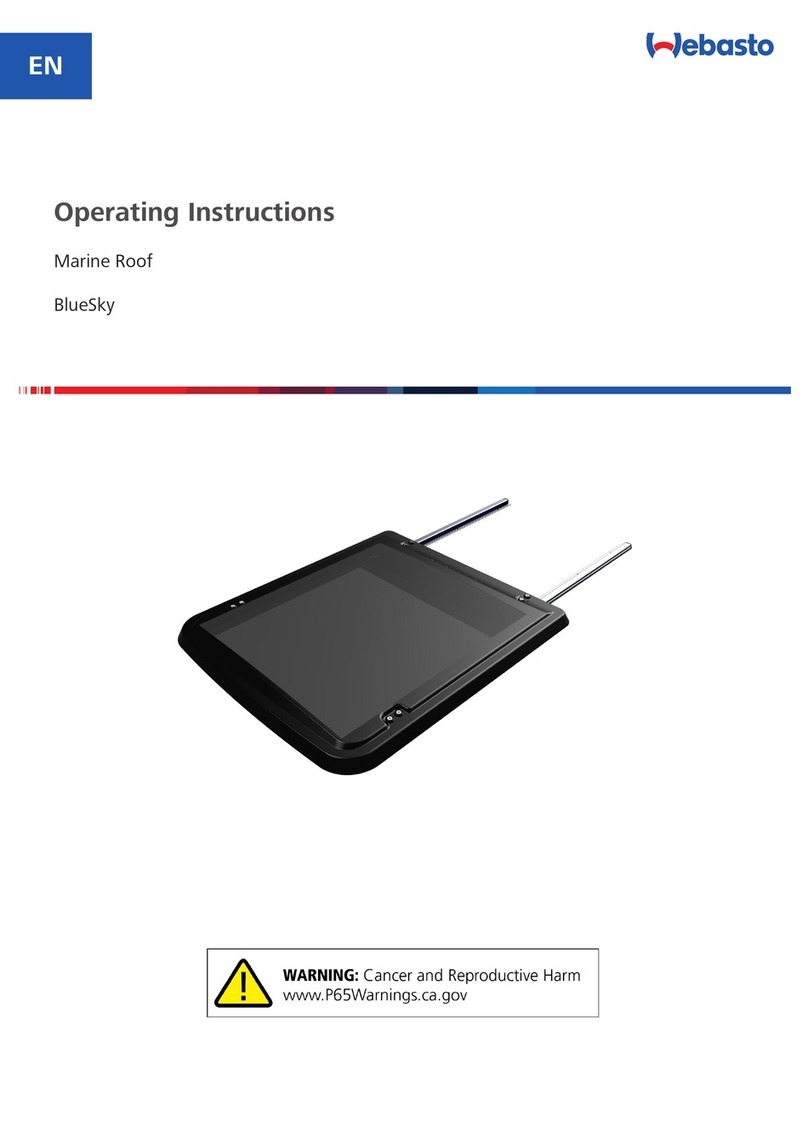
Webasto
Webasto BlueSky operating instructions
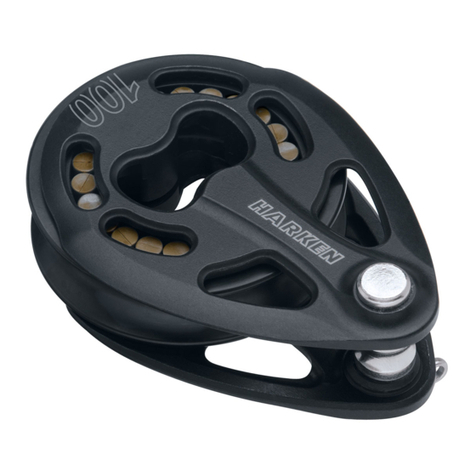
Harken
Harken Black Magic Series instruction sheet

EHEIM
EHEIM skim marine 100 operating instructions

MarkSetBot
MarkSetBot MarkSetBot Setup guide

Cellofoam
Cellofoam PERMAPORT XPRESS Assembly, installation and maintenance instructions
